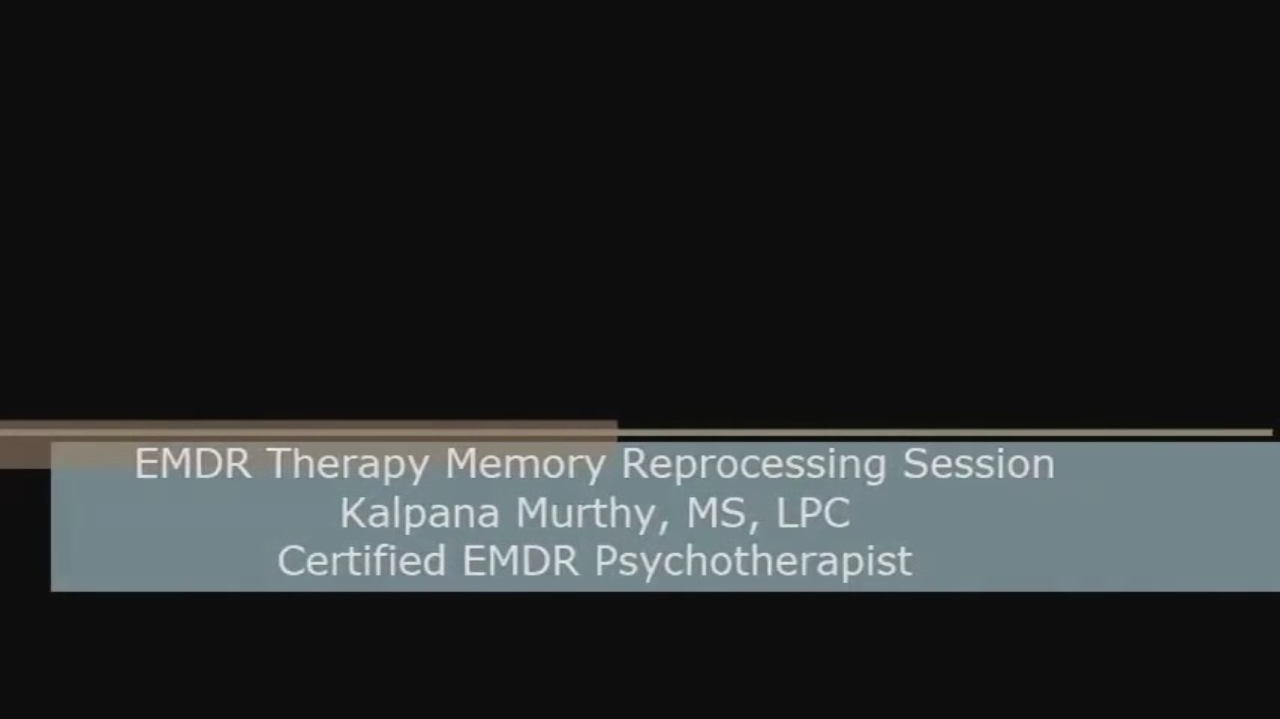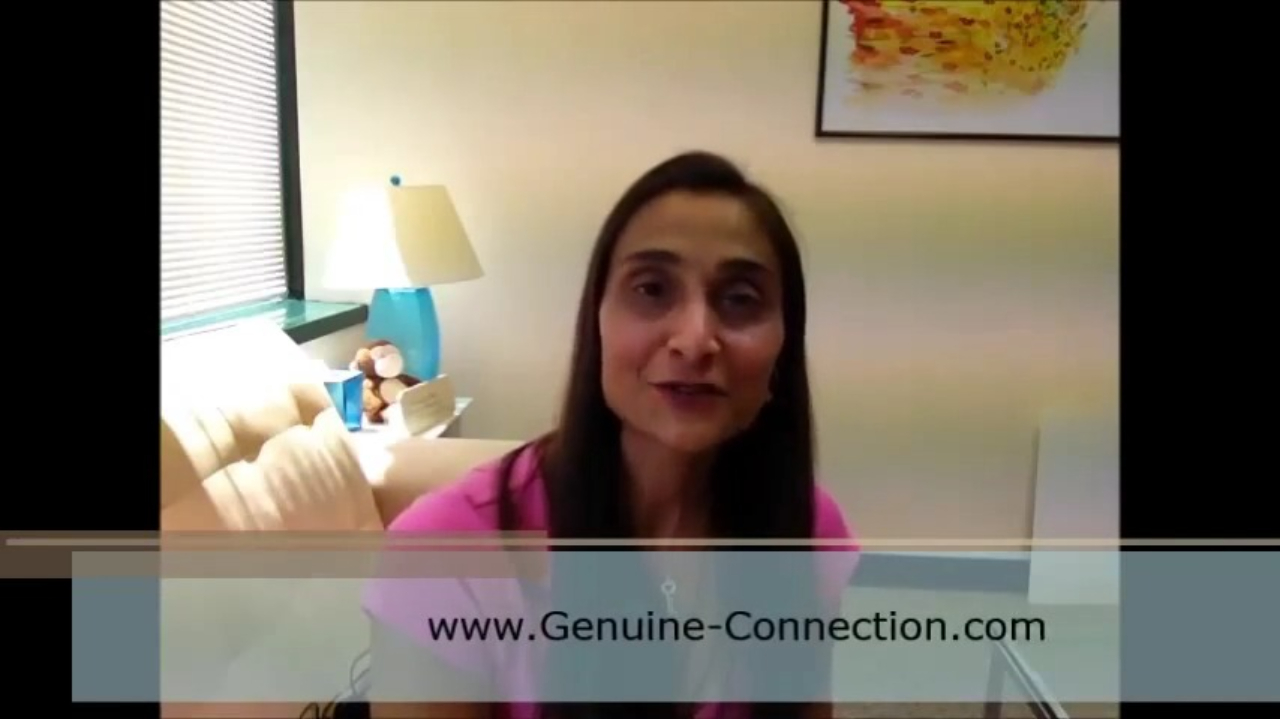EMDR Therapy – Memory Reprocessing for Upsetting Experiences and for Career Performance Enhancement
Get Past Your Past
EMDR therapy is a brief, highly effective therapy that helps you access your brain’s information processing systems and memory networks to quickly and naturally reprocess memories of past experiences that are contributing to negative self-talk, self-esteem issues, anxiety, depression, relationship problems, workplace problems, addictions, and more. EMDR therapy is an evidenced based, whole brain psychotherapy approach that has been used worldwide for over 30 years.
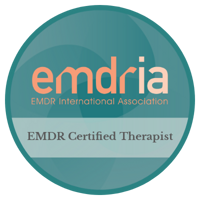 When you work with me for EMDR Therapy you can be confident in the process, because I have specialized in EMDR since 2007, and am an EMDRIA Certified EMDR Therapist since 2009. This designation means I have additional training and experience beyond the basic EMDR Level I & II training, and have demonstrated proficiency with EMDR Therapy. I also attend annual EMDR continuing education classes in order to maintain my certification.
When you work with me for EMDR Therapy you can be confident in the process, because I have specialized in EMDR since 2007, and am an EMDRIA Certified EMDR Therapist since 2009. This designation means I have additional training and experience beyond the basic EMDR Level I & II training, and have demonstrated proficiency with EMDR Therapy. I also attend annual EMDR continuing education classes in order to maintain my certification.
In 2020, I also became proficient in delivering effective online EMDR therapy sessions using a customizable, online EMDR platform that allows you to see bilateral eye movements and hear bilateral tones just like if you were in my office using an EMDR light bar with bilateral tones.
“I’ve specialized in EMDR therapy since 2007. I love EMDR therapy because of how quickly clients achieve symptom relief, lasting problem resolution, emotional healing, insight, and an increased sense of well-being with EMDR. It would take months or years of traditional talk therapy or coaching to produce the benefits I’ve seen clients experience in a short time with the EMDR therapy. I especially enjoy how EMDR helps adults with multiple incidences of childhood abuse (emotional, verbal, sexual, physical) and a lifetime of upsetting experiences. I also use EMDR to help enhance clients’ self-confidence and performance anxiety for job interviews, public speaking, starting a business, and moving through writer’s block.”
What is EMDR Therapy?
What types of situations can EMDR help? It’s Not Just for PTSD.
What are the benefits and advantages of EMDR?
What if I don’t know what memories to work on? or What if I have so many upsetting memories I don’t know where to start?
What happens during an EMDR session?
Why Eye Movements or Bilateral Stimulation?
Can we do EMDR online?
How many sessions will I need?
How does EMDR work?
How effective is EMDR?
How is EMDR therapy different from other forms of therapy, hypnosis or coaching?
Why choose a Certified EMDR Therapist vs an EMDR Therapist?
How do I know if EMDR is right for me?
What is EMDR – Eye Movement Desensitization and Reprocessing?
EMDR stands for Eye Movement Desensitization and Reprocessing. It is a brain based approach to adapting or reprocessing childhood experiences or more recent experiences that contribute to present day problems.
The information associated with these memories has gotten stuck or stored in your brain in a way that time and talk alone can not shift. The images, sounds, smells, physical sensations, emotions, thoughts and beliefs about yourself that you feel when you think about the memory now is what contributes to present day issues. These stuck memories cause negative self-talk, anxiety, physical discomfort, and affect how you relate to others, cope with stress, or behave in certain situations.
Reprocessing a memory with EMDR doesn’t mean talking about it in great detail. It means we access the memory, set up a learning state in the brain, and use bilateral stimulation to engage the right and left hemispheres of the brain to rapidly digest, process and change the memory so it no longer creates distress for you.
This Introduction to EMDR Therapy video, created by the EMDR International Association, includes: a simple explanation of brain biology as it relates to distressing experiences and EMDR, research supporting the effectiveness and efficiency of EMDR, and therapists describing how EMDR helps clients.
What types of situations can EMDR Therapy help?
It’s Not just for PTSD.
EMDR Therapy was initially used to treat Post Traumatic Stress Disorder (PTSD) with Veterans of War and over the last 25 year it has been shown to be effective in treating a range of issues as well as increase performance (career, sports, the arts) and increase general well-being. While it’s not a cure-all and no psychotherapy can guarantee results, here are some of the symptoms and issues that I’ve seen EMDR therapy help.
- Negative Self-Talk, Self Esteem
- Shame, Embarrassment
- Abuse – Emotional, Verbal
- Abuse – Sexual, Physical
- Anxiety & Depression
- Trauma – Childhood or Recent
- Childhood Bullying, Criticism
- PTSD – Post Traumatic Stress Disorder
- Loss – Person, Pet, Job
- Criticism, Rejection, Neglect
- Relationship Endings
- Affairs, Trust Issues
- Accidents, Assault, Date Rape
- Upsetting Memories
- Writer’s Block
- Feeling Stuck
- Presentation or Interview Anxiety
What are the benefits and advantages of EMDR?
- EMDR reduces anxiety, generates insights, resolves problems and increases feelings of well-being much faster than traditional talk therapy or coaching.
- EMDR works much faster than other forms of talk therapy or coaching, because it engages your brain’s natural, rapid mechanism to process, digest, and change information that is stored in your brain networks.
- EMDR works on all the sensory information, emotions and thoughts associated with an experience as well as the meaning or negative belief about yourself you feel when you think about the experience. Rationally you may know these negative beliefs are not true, but they feel true.
- EMDR helps you access and process your thoughts and feelings without having to discuss the upsetting experiences in great detail with the therapist.
- EMDR is client centered and you are completely in control. Throughout the EMDR process, you are completely awake, and therapist is not making any suggestions or directing your thoughts. EMDR processing relies on your own beliefs, values and thoughts about a situation. It will not change or take away any information that you want to hold on to or that serves you well.
- EMDR is a drug-free approach that relies on the brain’s natural healing abilities.
What if I don’t know what memories to work on? Or What if I have so many upsetting experiences I don’t know where to start?
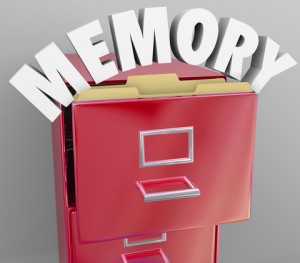
It’s okay if you don’t already know what past experiences are contributing to your present day issues. Recalling memories is like pulling files from your brain’s filing cabinet. Associated memories are filed together. We can start with present days feelings and use an EMDR process that helps us identify earlier associated experiences.
If you have a lifetime of emotionally distressing experiences, we will be able to quickly organize them according to themes, and identify which memories would be appropriate to reprocess based on your goals. Since our memories are filed in associated networks, we typically just need to reprocess a few upsetting memories associated with a theme.
What happens during an EMDR session?
During an EMDR memory reprocessing session, you begin by thinking about the memory of an upsetting event and the negative belief about oneself associated with that memory, and then from that starting point you just notice what thoughts and sensations come up while you are watching a light move from right to left across a bar, or while you’re hearing audio tones that alternate in your right and left ears.
During this short set of bilateral movements, you won’t be talking to the therapist. This is because the speed of your mind is faster than the speed of your mouth. We’re letting your brain do the work.
Periodically, we stop these bilateral movements, and you’ll briefly share with me whatever images, thoughts, feelings or physical sensations came up for you during that set. I’ll be your guide on the side monitoring the process to insure that the processing is moving forward and to determine when it is completed.
During a memory reprocessing session, you may or may not experience strong emotions for a brief period, but by the end of the session, most people report feeling less distress and feeling more confident and comfortable with who they are and how to handle future situations that in the past were stressful or anxiety provoking.
EMDR will not erase a memory and does not create false memories. When you have finished processing a targeted memory, you will still remember the experience happened, but it won’t be as distressing and the memory will have a different meaning to you than it did before in terms of your beliefs about yourself.
A typical EMDR processing session is 90 minutes. Prior to a processing session, we will need to have other sessions for planning and preparation.
Why does EMDR use Eye Movements or Bilateral Stimulation?
Engaging the right and left hemispheres of the brain in an alternating pattern is called bilateral stimulation. Bilateral stimulation is similar to what happens during Rapid Eye Movement (REM) sleep when we our eyes move back and forth as we dream. Bilateral stimulation and REM sleep facilitates the movement of information in the brain, so the information from your past experiences is adapted and stored in a way that helps you rather than causing distress, negative self-talk, or other negative associations. REM sleep is the brain’s natural process of digesting and storing the information we’ve taking in during the day.

We use bilateral stimulation while you’re thinking about a memory or present day situation that causes some discomfort. We create bilateral stimulation using alternating, right-left eye movements, or audio tones alternating in your right and left ear, or physical taps alternating in your right and left hand.
There are various ways we can engage the information processing power of the right and left hemispheres of the brain: you can watch a dot of light as it moves from right to left across a device, or you can wear an audio headset to hear a tone that alternates in your right and left ear, or you can hold a small device in each hand that emits a physical tapping sensation that alternates in your right and left hand.
Can we do EMDR Online?
 Yes, we can do EMDR online therapy! I offer safe, effective, secure online EMDR therapy using a customizable, technology tool called remotEMDR and my Zoom HIPAA platform. Just like if we were meeting in-person in my office and using an EMDR light and audio bar, during an EMDR video teletherapy session, you will be able to see on your device screen a moving dot you’ll follow for bilateral eye movements and you’ll be able to hear bilateral audio tones. Just like in my office, I’ll be able to adjust the bilateral settings for your comfort and tailor them to what’s happening during your session.
Yes, we can do EMDR online therapy! I offer safe, effective, secure online EMDR therapy using a customizable, technology tool called remotEMDR and my Zoom HIPAA platform. Just like if we were meeting in-person in my office and using an EMDR light and audio bar, during an EMDR video teletherapy session, you will be able to see on your device screen a moving dot you’ll follow for bilateral eye movements and you’ll be able to hear bilateral audio tones. Just like in my office, I’ll be able to adjust the bilateral settings for your comfort and tailor them to what’s happening during your session.
In all cases, we will still be able to see each other and talk to each other throughout the EMDR online session while staying within a secure video platform.
For more about online EMDR therapy, click here.
How many EMDR sessions will I need?
The standard EMDR protocol is an eight step process that includes: goal setting, history taking, identification of associated memories and beliefs contributing to present day problems, strengthening of positive beliefs about one’s self using EMDR, processing of selected past, present and future scenarios using EMDR, talk therapy around insights and issues that arise during processing and between sessions, completion, and follow-up.
As with any form of therapy, the relationship between the client and therapist plays an important role in the effectiveness of the work. It is important that we have a few sessions prior to the memory reprocessing session to clearly define the problem, plan the work and develop a rapport and relationship where you feel comfortable.
How does EMDR work?
EMDR appears to have a direct effect on the way that the brain processes information. We know that when we are in the middle of a stressful or upsetting event, our brain cannot process information the way it ordinarily does. As a result the thoughts, emotions and physical sensations we experienced during the upsetting event get stuck or frozen in our brain. These stuck experiences influence how we perceive ourselves, the world and how we interact with others.
The bilateral stimulation process used during EMDR helps the information get unstuck and helps you connect that information with other information in the brain so the information is stored in a way that is more helpful to you. As the information is processed, the memory becomes less upsetting and you’re able to have more positive beliefs about yourself.
EMDR doesn’t erase the memory. You will still remember the memory, but if or when you think about it, it will no longer has the same emotional charge and it is much less likely to get activated during present day events.
How effective is EMDR?
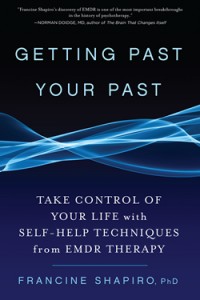 EMDR has been extensively researched since it was developed in 1987. It has been found to be the most effective treatment for PTSD post-traumatic stress disorder.
EMDR has been extensively researched since it was developed in 1987. It has been found to be the most effective treatment for PTSD post-traumatic stress disorder.
EMDR is recognized as an evidenced based, effective trauma treatment by numerous health organizations. It is listed in the National Registry of Evidenced Based Programs and Practices issued by SAMHSA, the Substance Abuse and Mental Health Services Administration. It is also endorsed as an effective treatment for trauma by the American Psychiatric Association, US Department of Defense/Veteran Affairs, the World Health Organization, and many other international health and government agencies.
It is estimated that over 2 million people have reduced their psychological distress and enhanced their performance through the use of EMDR.
For research, articles, videos and more information on EMDR, go to:
How is EMDR therapy different from other forms of therapy, hypnosis or coaching?
A Certified EMDR therapist’s psychotherapy orientation is to look at how memories of past experiences from childhood and more recently are unconsciously getting activated in present day situations and contributing to present day problems.
EMDR is not a form of hypnosis. You are not in a trance like state and the therapist is not suggesting anything to direct your processing.
Why choose a Certified EMDR Therapist vs an EMDR Therapist?
In an effort to provide the public with skilled practitioners of EMDR, the EMDR International Association (EMDRIA) developed a certification process. To achieve the designation of EMDRIA Certified Therapist, a licensed mental health clinician must go beyond the basic EMDR Institute Level I and Level II training required to be able to offer EMDR Therapy, and demonstrate clinical proficiency in their EMDR skills.
To earn the designation of EMDRIA Certified EMDR Therapist, a therapist must provide written documentation to support that they have completed an EMDRIA approved Level I & II training program in EMDR, have conducted a minimum of fifty clinical sessions in which EMDR was utilized, have received twenty hours of consultation by an EMDRIA Approved Consultant, and received three letters of recommendation from EMDR therapists who are familiar with the therapists EMDR skill, knowledge and ethical practice.
In addition, to maintain Certification, a therapist must complete at least twelve hours of continuing education in EMDR every two years.
Kalpana Murthy, LPC has been providing EMDR therapy since 2006 and earned the designation of EMDRIA Certified EMDR Therapist in 2009. She attends annual EMDR continuing education classes to keep up on the latest research, learning, and best practice procedures for EMDR. She has also taught continuing education workshops on EMDR Therapy to educate other counselors and health care professionals about what EMDR is and how it can help their patients or clients.
Certified EMDR Therapists are deeply invested in keeping pace with the rapidly evolving body of knowledge and new techniques in EMDR. In addition, they tend to utilize EMDR regularly and thus have more real time experience. When selecting an EMDR therapist, you can be confident in the skill level and experience of a Certified EMDR therapist.
How do I know if EMDR is right for me?
If you’re wondering if EMDR is right for you, I am happy to discuss your situation and questions prior to you scheduling an appointment.


